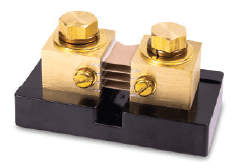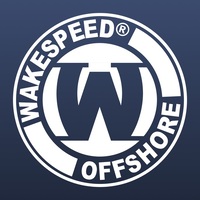Interested in purchasing a Wakespeed WS500? Please refer to this guide for a starting point on some important considerations around if this product is the right fit for your needs, along with some information on additional components that may be required
Battleborn's Wakespeed WS500 buyer's guide
Author: Wakespeed
WHAT YOU NEED TO KNOW WHEN BUYING A WS500
This page is an HTML version of the Wakespeed Buyer's Guide available here: https://battlebornbatteries.com/wp-content/uploads/2022/11/What-You-Need-to-Know-When-Buying-a-WS500-Guide-11.22.22.pdf

WHAT TYPE OF BATTERY WILL YOU BE USING IN YOUR POWER SYSTEM, LEAD ACID OR LIFEPO4?

While the WS500 offers features that make it particularly beneficial for LiFeP04 battery banks, its ability to monitor and measure amps into and out of the batteries make it equally worthwhile for traditional batteries like gel, AGM and deep cycle flooded lead acid chemistries. As most battery manufacturers will recommend, proper charging relies on the ability to control charging current as well as voltage. The WS500 enables the alternator to provide charging that was previously limited to smart shore power chargers.
Charging LiFeP04 batteries requires a greater level of charging precision than traditional alternator regulators are able to deliver. Unlike lead acid batteries, lithium batteries can’t be measured by increasing resistance as the batteries are charged. As a result, it’s necessary to monitor the amount of current being delivered by the charge source to anticipate when the batteries are near a fully charged state. The only accurate way to measure the battery’s state of charge is to measure the current being delivered directly to the batteries.
The WS500 uses a couple of methods to measure current; an inline (analog) current shunt, or by getting information directly from the lithium battery’s battery management system (BMS) via CANbus connection.
If you are using Lithium-ion, we strongly suggest using a battery that is supported by Wakespeed. We’ve worked directly with these battery manufacturers to ensure proper charging profiles. Refer to the configuration files on our website or mobile app for a full list. Wakespeed Support
SYSTEM VOLTAGE
The WS500 is designed to provide intelligent charging for system voltages ranging from 12VDC to 48VDC, and will auto-detect at 12VDC, 24VDC and 48VDC. The regulator can also be user configured to support other voltages in between.

SELECTING A HARNESS: IS THIS A MARINE OR AN RV/AUTOMOTIVE INSTALLATION?
The two applications aren’t much different in terms of outcome, but there are a few elements that should be considered — most notably, the type of wiring harness used.

WHICH HARNESS IS BEST FOR MY NEEDS?
Depending on the application, if the regulator is being installed close to the alternator, the standard harness (60 Inches in length) is probably the best choice, even if the field and stator wires need to be extended beyond the standard harness length.

If your application is an RV or vehicle where the regulator is installed up to twenty or more feet from the alternator, the VAN harness will provide an easier installation.
STANDARD WIRING HARNESS
In marine environments, the regulator is usually installed closer to the alternator than the batteries or equal distance between the two. Wakespeed offers a standard wiring harness that’s used in most marine installations.
VAN WIRING HARNESS
In the majority of RV or trucking applications, the Wakespeed regulator is installed near the house batteries, rather than under the hood of the vehicle. A special regulator wiring harness (WS500-PH/VAN) has been developed for these applications, with an extended leg that’s intended to reach the alternator.
ADDITIONAL CONSIDERATIONS:
There are two types of excitation used to control alternator output:
- A-type (aka N-type excitation)
- B-type (aka P-type excitation)
The type of regulation that the WS500 delivers is controlled by the wiring harness used. The vast majority of installations are going to use the Wakespeed P-type harness (WS500-PH/CAN). Be sure to determine your alternator’s excitation polarity. If your alternator is set up for positive excitation, the standard P-type harness or P-type VAN harness will work. If the alternator is set up for N-type excitation, you might consider having a qualified shop modify the alternator for P-type excitation, or contact Dragonfly Energy for other options.
WHAT TYPE OF ALTERNATOR DO I HAVE?
Alternators are essentially broken into two categories; internally regulated and externally regulated. The WS500 regulator is engineered to work with alternators that are manufactured or modified to be externally regulated. DO NOT try to use the WS500 with an internally regulated alternator. If you are not sure of the alternator you’re using, have it inspected and modified for external P-type regulation at a qualified marine or auto electric shop. Contact Dragonfly Energy for other options.

SINGLE & DUAL ALTERNATOR APPLICATIONS:
While multiple-alternators are more common in marine applications, an increasing number of high energy RV and trucking systems rely on multiple alternators to supply increased output to large battery systems. The WS500 can be used to control multiple alternators on a single engine by splitting the field output between alternators, or in the case of a multi-engine installation found in a marine environment, by using two or more WS500 regulators — connected to each other via CANbus — to support a large, single battery bank.

ARE CAN CROSS OVER CABLES NEEDED?
The CAN Cross Over Cables are used when going from your Wakespeed WS500 to a Victron GX unit, most commonly, the Cerbo GX. There are a few different cable options that are dependent on your usage.
- The Victron RJ45 cross over cable is used to connect To the Victron Cerbo screen.
- The Marine NMEA2000 adapter (aka M12) is used in connection to additional monitoring solutions from Victron and other suppliers.
- The Lithionics Y cable (with DTM terminator) is used as a Connection to a Lithionics BMS.
Contact Dragonfly Energy for other options.
DO I NEED A BATTERY TEMPERATURE SENSOR?
Battery temperature sensing is an important part of smart regulation. Battery temperature sensors should be used in any application where battery temperature information is not being supplied to the regulator via CANbus communication.

DO YOU NEED TO PURCHASE A CURRENT SHUNT?
Shunts ARE recommended, as they measure the current coming in from the alternator. The specific shunt needed would be determined on a case to case basis, with products from Victron and Deltec being the most common.

RECOMMENDED PACKAGES BASED ON APPLICATION:
BATTLE BORN BATTERIES / DROP-IN LITHIUM
| STANDARD | W/ VICTRON CERBO | TWIN ENGINE |
|---|---|---|
|
|
|
| *For Van applications (Sprinter/Promaster/Transit), we recommend using the WS500/PH-VAN Van Wiring Harness | ||
VICTRON SMART LITHIUM
| W/ VE BUS BMS | W/ VE BUS BMS/CERBO | W/ LYNX BMS/CERBO |
|---|---|---|
|
|
|
| *For Van applications (Sprinter/Promaster/Transit), we recommend using the WS500/PH-VAN Van Wiring Harness | ||
LITHIONICS BATTERIES
| DELPHI CONNECTOR | DELPHI CONNECTOR M12/NMEA STYLE BACKBONE CONNECTOR |
|---|---|
|
|
BATTLE BORN BATTERIES / DROP-IN LITHIUM
| STANDARD | W/ VICTRON CERBO | TWIN ENGINE |
|---|---|---|
|
|
|
REFER TO THE WAKESPEED WEBSITE FOR ADDITIONAL DRAWINGS, DOCUMENTATION AND TRAINING RESOURCES.
A table of WS500 error codes is provided here: https://www.solar4rvs.com.au/buying/wakespeed_ws500-error-codes





























